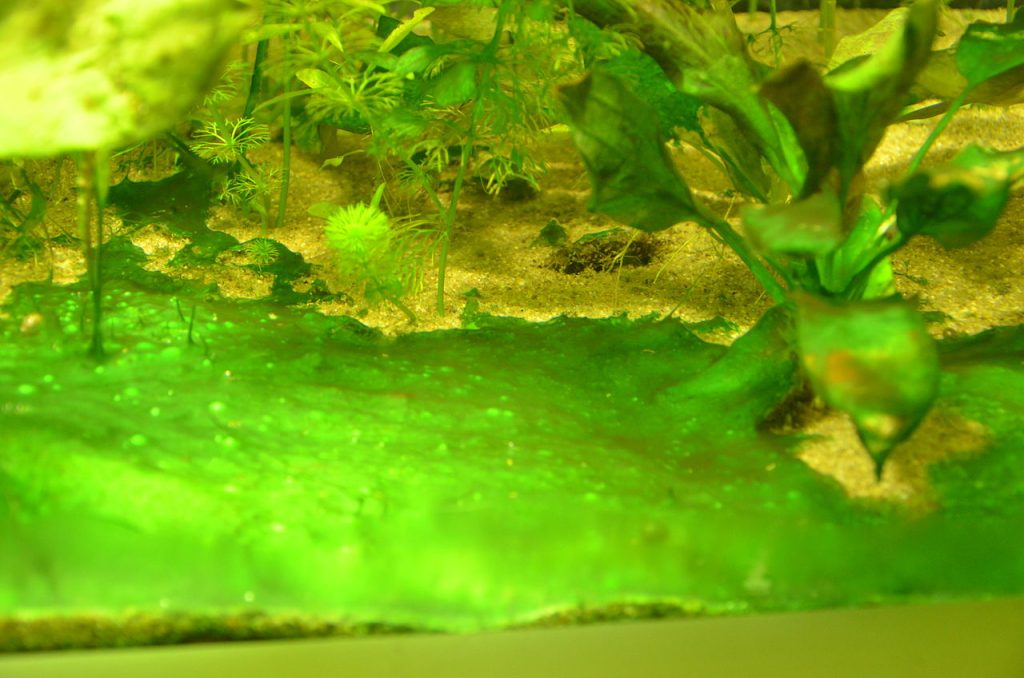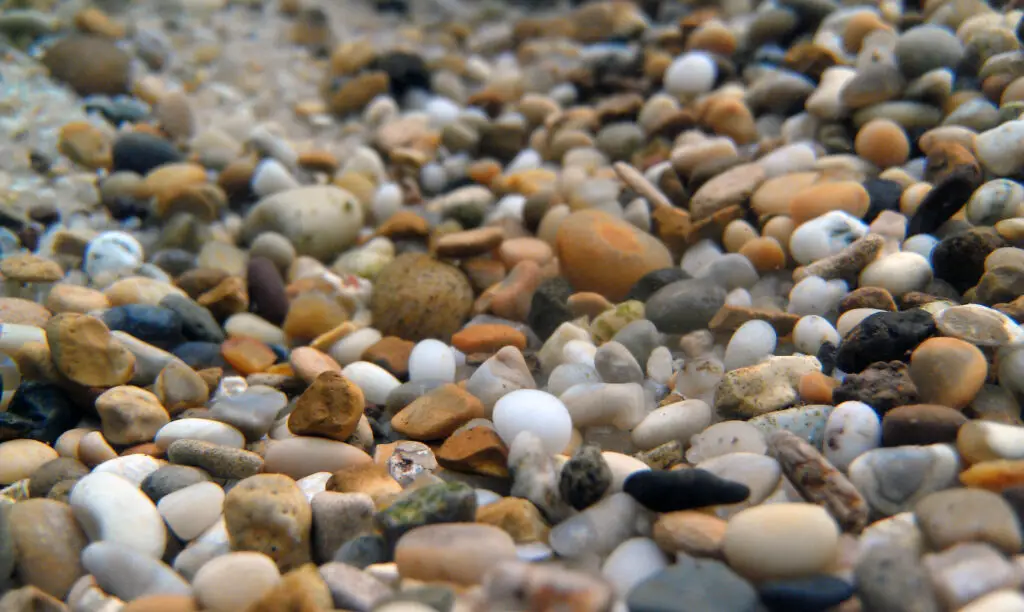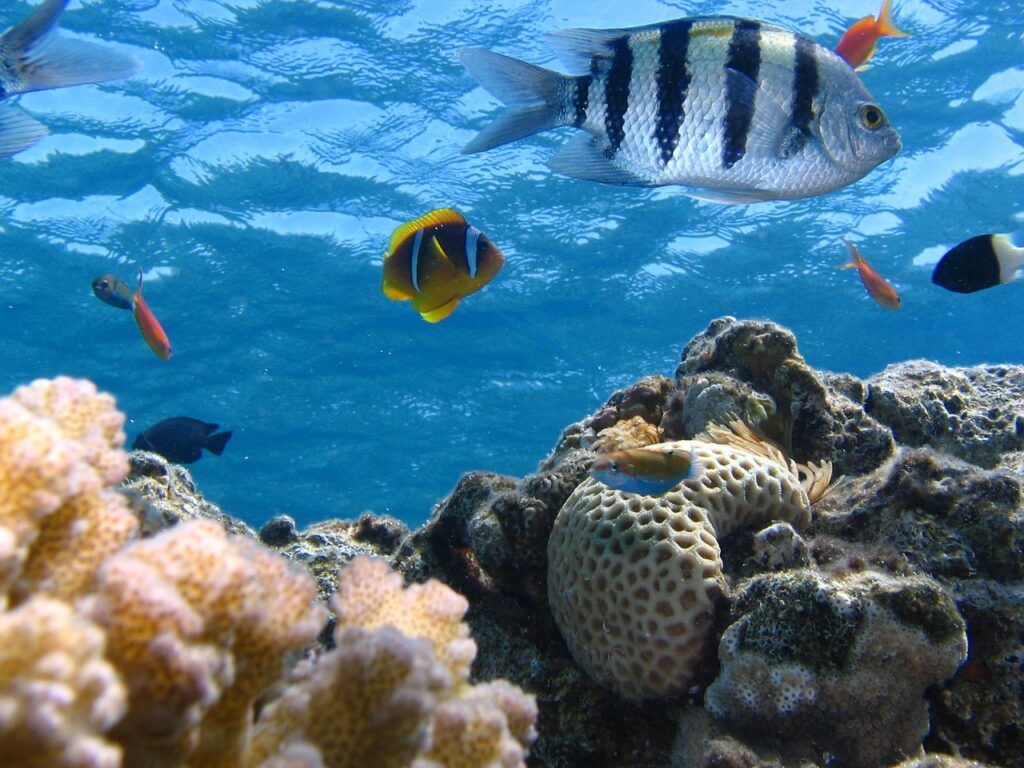Keeping a fish tank clean and healthy for its inhabitants is paramount, and one common issue that aquarists may face is the development of a protein film on the water’s surface.
This oily layer is unsightly and can disrupt oxygen exchange and limit light penetration, negatively impacting the aquatic life within the tank. Addressing this problem safely and efficiently is essential for maintaining a thriving aquarium environment.
There are several methods for getting rid of protein film in a fish tank, and choosing the right one will depend on your specific situation and equipment.
Some common techniques include manual removal with a paper towel, leveraging water circulation, or using a surface skimmer.
This article will guide you through these methods and help you find the most suitable approach for maintaining a clean and clear fish tank.
Identifying Protein Film
Protein film is a common issue in fish tanks and can be identified by the thin, oily layer floating on the water’s surface. It forms due to various factors, such as excess nutrients, decaying organic matter, or insufficient water movement.
The appearance of protein film can vary depending on the severity of the issue.
It might be barely visible in some cases, while it can create a thick layer that impedes light penetration and gas exchange in others.
Observing the water surface in your fish tank is essential to detect the presence of a protein film.
Signs of protein film include:
- A shiny, oil-like appearance on the water’s surface
- Tiny bubbles or foam forming along the edges or corners of the tank
- Reduced water clarity due to the film blocking light
- Difficulty in maintaining proper water chemistry as gases struggle to dissipate
It’s crucial to address protein film promptly, as it can negatively impact the overall health of your aquarium inhabitants. The following sections discuss various methods to remove and prevent protein film in your fish tank.
Causes of Protein Film
Protein film in fish tanks often results from several factors. One major cause is the need for proper aeration in the tank.
Insufficient surface agitation contributes to the buildup of protein and oil layers on the water surface, which can be prevented with good water movement caused by filters and aerators.
Another contributing factor to protein film buildup is fish waste. Oily and greasy fish foods contribute to oily droppings.
Furthermore, the fish’s natural digestive system breaks down food, producing oils and proteins that eventually rise to the surface.
Therefore, to reduce protein film caused by waste, avoiding overfeeding and using high-quality fish food is essential.
Causes of Protein Film in Fish Tanks
- Lack of proper aeration
- Fish waste and oily fish food
- Inadequate filtration or malfunctioning equipment
Sometimes, malfunctioning or inadequate filters and pumps could also cause protein film.
For example, an inefficient or improperly functioning filter may release excess oil into the water, exacerbating the oil slick problem.
Dissolved organics in the water can also contribute to forming protein films. These can be reduced by implementing regular water changes, ensuring proper filtration, and adding a surface skimmer to the tank.
Preventing Protein Film
Preventing protein film in your fish tank is crucial for maintaining a clean and healthy environment for your aquatic pets.
By focusing on proper feeding, regular water changes, and maintaining water quality, you can significantly reduce the occurrence of protein film in your fish tank.
Proper Feeding
Overfeeding your fish can lead to excess waste and nutrients in the water, which can contribute to the formation of protein film. To prevent this, follow these feeding tips:
- Feed your fish only what they can consume within a few minutes.
- Avoid leaving uneaten food in the tank.
- Consider feeding your fish smaller amounts multiple times daily rather than one large feeding.
Regular Water Changes
Performing regular water changes helps maintain a healthy balance of nutrients and chemicals in your fish tank.
In addition, this can prevent the buildup of organic waste and protein film. Here are some guidelines for water changes:
Tank Size
Frequency Amount of Water Changed
Small tanks (5-10 gallons)
Once a week
10-20% of the tank’s water
Medium tanks (20-50 gallons)
Every 2-3 weeks
15-25% of the tank’s water
Large tanks (50+ gallons)
Once a month
20-30% of the tank’s water
Maintaining Water Quality
Keeping your fish tank’s water clean and chemically balanced prevents protein film. Some ways to maintain water quality include:
- Using a quality filter that can efficiently remove debris and excess nutrients.
- Ensuring proper water circulation to prevent stagnant areas where waste can accumulate.
- Monitoring and adjusting water parameters like pH, alkalinity, and nitrate levels as needed.
By following these prevention methods, you can reduce the occurrence of protein film and keep your fish tank clean and healthy for your aquatic pets.
Removing Protein Film
Skimming the Surface
One of the quickest and easiest ways to remove protein film in a fish tank is by skimming the surface using a paper towel.
First, turn off all your equipment (filter, heater, light, etc.), then place a paper towel over the top of the water. The paper towel will absorb the film, leaving your aquarium water clean and clear.
Using Surface Skimmers
Another effective method to eliminate protein film is by using a surface skimmer. Surface skimmers can be attached to the inflow of your aquarium filter.
The skimmer contains two holes; one at the top and another at the bottom. The top hole draws in the protein film, while the bottom hole takes in water. This process helps to eliminate the floating oil film within minutes.
Applying Aquarium Additives
Some aquarium additives can help to break down protein film and improve overall water quality.
However, these products should be used sparingly, as overusing aquarium additives may disrupt the balance of your tank’s ecosystem.
Be sure to follow the manufacturer’s instructions when using these products, and always consult a professional before introducing new additives to your fish tank.
Keeping a Healthy Fish Tank
Maintaining a healthy and clean aquarium is essential for the well-being of your fish and aquatic plants.
However, protein film can become a major concern if not appropriately addressed. Below are a few simple tips to keep your fish tank healthy and free of protein film.
Firstly, it is crucial to have proper filtration in place. Ensuring a good quality filter, like a surface skimmer, can effectively remove excess proteins and debris from the water surface.
As mentioned in FishLab, the Fluval Surface Skimmer is a great option to keep your aquarium clear of oil and protein films.
Another important factor is controlling the food supply to your fish. Overfeeding can lead to an excessive buildup of proteins and fats, which cause oily surface films.
Therefore, providing a balanced and appropriate diet and monitoring the food given to your aquatic pets is essential.
The Aquascaping Wiki recommends reducing the food supply or using higher-quality fish food to avoid such issues.
Regularly cleaning your filter can help remove debris and prevent water contamination with harmful substances.
Cleaning your filter with a mix of white vinegar and water is a practical approach, as mentioned by efishkeeping. Additionally, replace the sieve and sponge in the filter as needed.
Lastly, proper water agitation is essential for ensuring sufficient oxygen exchange at the water surface.
Air stones, powerheads, or wavemakers can help maintain water movement and aeration, preventing protein film buildup. In addition, paper towels, water agitation, and a surface skimmer can effectively remove and prevent protein films from forming on your fish tank’s surface.



